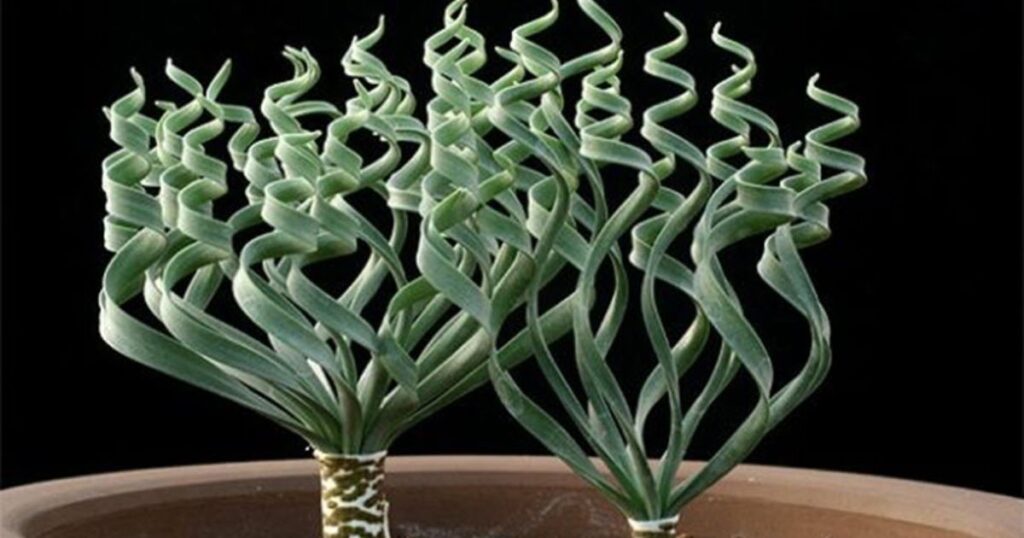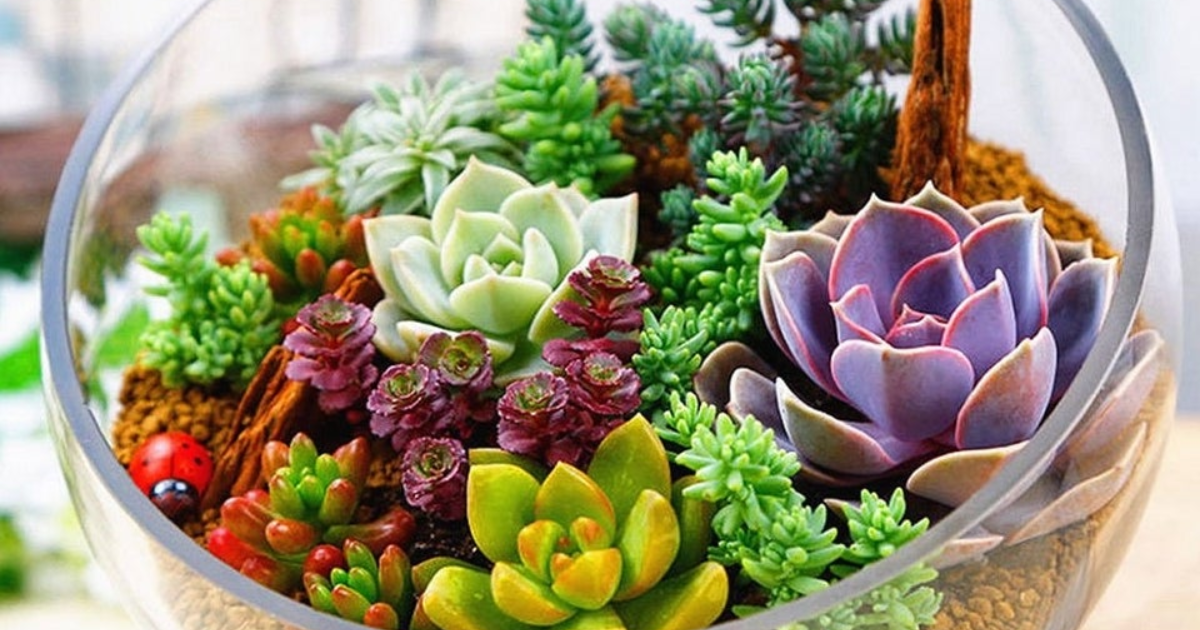Planting succulent seeds is simple. First, prepare well-draining soil in a shallow tray or pot. Sprinkle the seeds on top and press them gently. Cover with a thin layer of soil, mist to keep moist, and place in bright, indirect light. Watch them grow into beautiful succulents.
Ready to nurture your green thumb? Discover the secrets of successful succulent seed planting with our expert guide on How To Plant Succulent Seeds. Get your hands dirty and watch your tiny seeds transform into thriving succulent beauties. Don’t miss out, it’s time to start your succulent adventure today.
Planting succulent seeds involves sowing them in well-draining soil, lightly covering them, and providing adequate indirect sunlight. It’s a simple process that can yield a variety of unique and beautiful succulent plants.
Understanding Succulent Seeds
Before you dive into planting succulent seeds, it’s essential to understand the characteristics of succulent seeds and the types of succulents you can grow from them.
Characteristics of Succulent Seeds**
Succulent seeds are typically small, and their size can vary depending on the succulent species. They are often found in the dried flower heads of mature succulent plants. These seeds are adapted to arid environments and have built-in mechanisms to conserve water.
Types of Succulents Grown from Seeds
Numerous succulent species can be grown from seeds, offering a wide range of sizes, shapes, and colors. Some popular choices for growing from seed include Echeveria, Lithops, and Haworthia, among others.
Getting Started with Succulent Seeds

Before you plant succulent seeds, it’s crucial to gather the necessary materials and create a suitable environment for germination.
Materials You’ll Need
To plant succulent seeds successfully, gather the following materials .Obtain seeds from reputable sources or collect them from mature succulent plants. Choose a mix specifically designed for succulents or create your own by combining potting soil with perlite or sand.
Use shallow trays or small pots to provide the ideal space for seedlings.
Misting bottle
To keep the soil surface moist without overwa tering To create a mini greenhouse effect Succulent seeds require bright but indirect light for germination.
Preparing the Soil Mix
Start by preparing the right soil mix. Succulents thrive in well-draining soil to prevent waterlogged roots. Here’s a simple recipe. Combine regular potting soil with perlite or sand (about a 2:1 ratio).Mix thoroughly until well combined and free of clumps.
Choosing the Right Containers
Select shallow trays or small pots with drainage holes to prevent water from pooling at the bottom, which can lead to overwatering.
| Key Points | Description |
|---|---|
| Choose the Right Soil | Select a well-draining succulent-specific soil mix to ensure proper water management for seeds. |
| Suitable Containers | Use shallow trays, pots, or seedling containers with drainage holes for planting succulent seeds. |
| Prepare the Soil | Ensure the soil is thoroughly moistened and level it evenly in the container before planting. |
| Sow Seeds Sparingly | Sprinkle succulent seeds evenly across the soil surface without overcrowding for proper growth. |
| Light and Temperature | Place the container in a bright, indirect light spot with a temperature range of 65-75°F (18-24°C). |
| Cover and Mist | Create a mini greenhouse effect by covering the container and misting it occasionally to maintain humidity. |
| Patience and Watering | Be patient; succulent seeds may take weeks to months to sprout. Water sparingly once sprouted. |
| Transplanting | When seedlings are large enough, transplant them into individual pots or a succulent garden. |
| Mealybug Prevention | Keep an eye out for mealybugs and take action promptly to protect your succulents from infestation. |
Creating a Mini Greenhouse
To maintain the necessary moisture levels for germination, you can create a mini greenhouse effect using a transparent cover or plastic wrap. This keeps the environment humid without the need for frequent watering. If you’re also wondering how to get rid of mealybugs on succulents, it’s important to address this issue promptly to ensure the health of your plants.
Providing Indirect Sunlight
Place your containers in a location with bright but indirect sunlight. Direct sunlight can scorch the seedlings, so ensure they receive gentle, filtered light.
Planting Succulent Seeds Step by Step
Now that you’ve gathered your materials and prepared your environment, it’s time to plant your succulent seeds. Follow these step-by-step instructions for the best results.
Fill Containers with Soil
Fill your chosen containers with the prepared succulent potting mix. Leave a small gap at the top for easier watering and to prevent soil spillage.
Sow the Seeds
Gently sprinkle the succulent seeds evenly across the soil surface. Be careful not to overcrowd them, as this can lead to overcrowding and competition for resources as they grow.
Lightly Cover the Seeds
Using a fine layer of soil or vermiculite, lightly cover the seeds. This helps maintain the necessary humidity levels for germination and prevents the seeds from drying out.
Use a misting bottle to spray the soil surface lightly, ensuring it’s evenly moist but not soaked.
Create a Mini Greenhouse
Place a transparent cover or plastic wrap over the containers to create a mini greenhouse effect. This traps moisture and maintains the right humidity levels.
Provide Indirect Sunlight
Place the covered containers in a location with indirect sunlight. A windowsill with filtered light is ideal. Avoid direct sun exposure, as it can harm the fragile seedlings.
Monitor and Wait
Now, it’s a waiting game. Keep an eye on the containers to ensure the soil remains consistently moist but not waterlogged. You may see tiny seedlings emerging after a few weeks to a couple of months, depending on the succulent species.
Caring for Succulent Seedlings
As your succulent seedlings grow, they will require care and attention to thrive and eventually transplant them to their permanent homes.
Transplanting Seedlings
Once the succulent seedlings have grown large enough to handle, typically with a few sets of true leaves, they can be transplanted into their individual pots with regular succulent potting mix.
Gradually Increase Sunlight
After transplanting, gradually introduce your succulent seedlings to more sunlight over a period of a few weeks. This helps them adjust to the increased light levels without getting sunburned.
Watering Seedlings
Succulent seedlings should be watered sparingly but more frequently than mature succulents. Keep the soil slightly moist but avoid overwatering.
Fertilizing
Once the succulent seedlings are well-established and have been growing for a few months, you can start fertilizing them with a diluted succulent fertilizer. Follow the recommended instructions for the specific fertilizer you choose.
Common Challenges and Tips
Planting succulent seeds can be a rewarding experience, but it comes with its own set of challenges. Here are some common issues and tips to overcome them.
Slow Germination
Succulent seeds can take time to germinate, and some species may be slower than others. Be patient and maintain the right conditions.
Overwatering
One of the most common mistakes is overwatering. Use a misting bottle to keep the soil surface moist without saturating it.
Leggy Seedlings
If your seedlings appear tall and leggy, they may not be getting enough light. Increase their exposure to indirect sunlight gradually.
Mold or Fungus
The mini greenhouse effect can sometimes lead to mold or fungus. Ensure good air circulation and remove the cover periodically to prevent this issue.
FAQ’S
How do you grow succulents from seed?
To grow succulents from seed, sow them in well-draining soil, maintain humidity with a mini greenhouse, provide indirect sunlight, and be patient as they germinate and grow.
Do you soak succulent seeds before planting?
No, it is generally not necessary to soak succulent seeds before planting. Succulent seeds are typically sown directly onto well-draining soil.
How should succulents be planted?
Succulents should be planted in well-draining soil in containers with drainage holes, ensuring they receive indirect sunlight for optimal growth.
What do succulent seeds look like?
Succulent seeds are typically small and can vary in appearance depending on the species. They are often tiny, sometimes resembling fine dust or small black or brown pellets.
Conclusion
Planting succulent seeds is a rewarding journey for gardening enthusiasts, offering a diverse range of succulent species to adorn your collection. Understanding the characteristics of succulent seeds and the specific requirements of these unique plants is essential for a successful venture. By creating the right environment with well-draining soil, providing indirect sunlight, and utilizing a mini greenhouse approach, you set the stage for germination and healthy seedling growth.
Caring for your succulent seedlings involves vigilant watering, gradual exposure to sunlight, and eventual transplantation to their permanent homes. While the process may require patience and attention, the results are well worth the effort. Your tiny seeds will transform into vibrant, distinctive succulent plants that add beauty and character to your garden or indoor space. With a little time and care, you’ll be able to enjoy the exquisite world of succulents from their very beginnings, nurturing their growth and watching them flourish into unique, captivating specimens. So, don’t hesitate to embark on your succulent seed planting journey, and let your green thumb shine as you cultivate these remarkable plants from the ground up.










